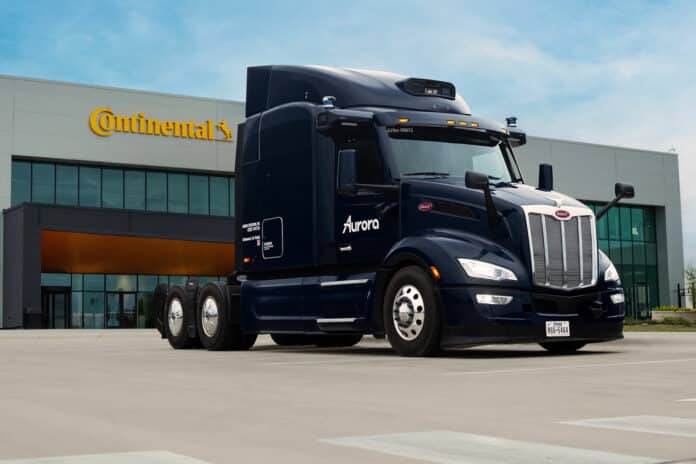Continental and Aurora Innovation have achieved a key development milestone in their partnership to commercialize autonomous trucks at scale. The two companies have finalized the design and architecture of the future fallback system and hardware of the Aurora Driver – an SAE (Society of Automotive Engineers) Level 4 autonomous driving system.
Continental plans to start its production in 2027, setting the stage for the world’s first scalable autonomous trucking system. The finalized hardware design comes less than a year after the companies entered an industry-first partnership, marking a significant step toward high-volume manufacturing of autonomous trucking systems.
Bringing new hardware to the market is a complex and time-consuming process that can take years from initial design to the start of production. To address this challenge, Aurora and Continental have collaborated to develop reliable, serviceable, and cost-efficient autonomous hardware kits for mass production.
This partnership will enable Aurora to deploy autonomous trucks at scale after its initial driverless launch in 2024. Leveraging Continental’s automotive development and manufacturing expertise, the future Aurora Driver is expected to deliver value to customers for up to one million miles.
“Technologies for autonomous mobility present the biggest opportunity to transform driving behavior since the creation of the automobile,” said Philipp von Hirschheydt, Executive Board member for the Automotive Group sector at Continental. “Achieving this milestone puts us on a credible path to deploy easy-to-service autonomous trucking systems that customers demand.”
Aurora is also working with Continental’s engineering team to develop an industrialized fallback system that is projected to be available in 2027. Self-driving vehicles need built-in backups that can take over in case a component or sensor fails to operate safely without a human driver.
These backups are known as fallback systems, and they consist of a specialized secondary computer that can take over operation if the primary system fails. This dual engineering approach aims to minimize the chances of single points of failure in both the primary and fallback systems.
“Finalizing the design of our future hardware is a meaningful step toward making the unit economics of the Aurora Driver compelling and building a business for the long-term,” said Chris Urmson, Co-Founder and CEO at Aurora.
